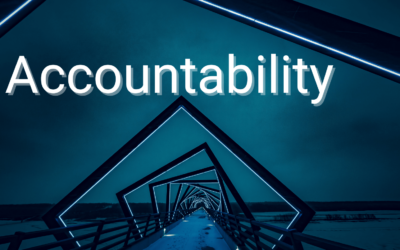Does the thought of New Year’s resolutions fill you with anxiety or exhilaration? Personally, setting New Year’s resolutions feels like breathing in the fresh, crisp air of possibility and hope. It’s as though a gleaming new road is spread out in front of me. But the road passes many intersections where I must choose to stay the course or divert. Resolutions guide my choices.
Ahh, yes. It’s a lovely metaphor…on January 1st but the story is different by…oh, say…March. Here are the numbers from research by the University of Scranton:
• 45% of Americans usually make New Year’s Resolutions
• 17% of Americans infrequently make New Year’s Resolutions
• 38% of Americans absolutely never make New year’s Resolutions
• 8% are successful in achieving their resolutions
• 49% have infrequent success
• 24% never succeed and fail on their resolution each year
It’s not an optimistic picture. But neuroscience research and my personal experience provide insights that will make you part of the 8%. Neuroscience shows that our brain retains an ability to learn new habits but it takes intentional focus (resolution), repetition (reminders and tracking), and emotional connection (rewards). When I reflect on my successful resolutions, it’s these keys -validated by science-that make the difference.
1. Set personally meaningful goals. When you think of your resolution, ask why. Is it really something meaningful to you or something you should do or something expected of you by others? Make your resolutions speak to you. You may have wanted to reach your goal of passing your driving test for a while now, but you haven’t been motivated to do this. Maybe this is your year. When you have this in mind, work towards this goal. Think of the steps you’ll need to take to make this a reality. Once you finally pass your test, your next step may be to look into finding cheapest car insurance for teens (if you are a teenager). You’ll look back at this and realise that it is possible to keep on top of achieving your new year resolutions. If you are someone who struggles with this though, it may be best to check out how I have labelled each section to make it easier to keep track.
For example, I write goals in five areas of my life:
• Personal
• Professional
• Friends & family
• Financial
• Community
For instance, last year I wanted to spend less money so I started to look at my spending habits to determine what could be done. While doing this, I actually discovered that I could actually get most things that I needed at a better price by using promo codes and coupons. Most stores like Target offer huge discounts throughout the year so it is important to do some research before committing to any large purchases. Accordingly, if your resolution this year involves saving money, you can take a look at this useful guide to the latest promo codes available on the Target website.
That is not all though. My friend, a high-achieving woman who juggles work, home, kids, community service, and more, sets an overall theme for the year. For example, last year was the “year of me.” Each intersection posed an opportunity to choose to stay on the “year of me” road or say yes to yet another commitment. In the end, she carved out more time to spend with her family – her top priority.
However, you do it set a goal that is meaningful at a deeply personal level.
So far, so good?
Lots of us get this far but it’s the next steps that determine your success.
2. Create reminders. After six months, more than half of us drop our resolution. Resolutions are overtaken by other activities or we simply lose the willpower. That’s why we need reinforcements and reminders. First, write down your resolution(s). I mean it. Write Them Down! People who explicitly make resolutions are ten times more likely to attain their goals than people who don’t.
Next, create reminders right away while your resolve is strong and your enthusiasm is high. Put reminders at locations you frequent during the day-home, office, car, refrigerator, bathroom mirror. It doesn’t matter what the reminder is as long as it reinforces your resolution. In my case, there is a list of my main goals on a whiteboard in my home office. Plus, sticky notes on my computer remind me of daily activities.
3. Track your progress. Tracking your progress visibly and in writing further embeds the resolution in your brain. Simon Reynolds said, “Inspiration gets you started. Habits keep you going.” The action of tracking transforms your resolution into a habit.
Each year, I set a business revenue goal. Revenue results from marketing calls and bookings for workshops and keynotes. I created a chart that is posted on my wall (reminder) where I record calls, bookings and revenue. Updating the chart maintains focus on my goals. Quarterly, I review all my goals and track progress. I then see what I can do better to meet even more goals in the future. For example, I recently decided to Learn More about SIP trunk solutions and see how they can add an extra revenue stream to a business. It’s like a mini-New Year every three months. There are times when the goal needs to be adjusted to account for the twists and turns in the road but rarely is it completely eliminated. I also think of ways in which I can invest this money back into more marketing techniques to increase my revenue for the new year, where I often have useful methods like SEO and social media marketing on the go throughout the year so that I can increase the traffic for my business website and the business revenue.
How can you track progress toward your resolution? Can you mark the calendar each time you go to the gym? Note registration dates for that course you have been meaning to take? Plot the growth in your savings account or the decline in your credit card balance? Whatever it is, track it regularly and visibly. Tracking is a form of repetition that tells your brain that-this time-you’re serious.
4. Reward yourself for each step. When coaching some high-achieving professionals, I find they are their own worst critic. Maybe it’s like that for you. You do-do-do and beat yourself up for not doing more. The thought of rewarding yourself seems outlandish. But think about the energy you expend. You face choice after choice where your resolution hangs in the balance. Each choice takes willpower. When you choose to stay on track, give yourself a little emotional pat on the back. Allow yourself to feel good about it. Even a small reward tells your brain that it’s on the right track.
Now it’s your turn. Try these four steps. They are easy, take little time, and make a big difference. What do you have to lose? For me, I commit to writing every month and I invite you to keep reading!
Whatever your resolution, I wish you much success and fulfillment in 2015.





0 Comments